

Physics, sponsored by the American Physical Society, aims to "spotlight exceptional research." Focus Stories, the longest-running part of the site, are aimed at physics undergraduates, physics professionals who want to learn about new fields, and science journalists.
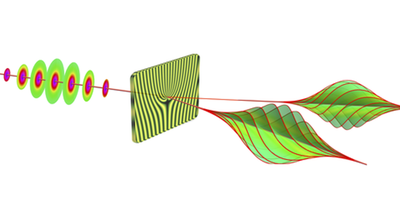 |
Big Twist for Electron Beam | January 23, 2015 |
Electrons that diffract from a grating with an intentional defect acquire a high orbital angular momentum. |
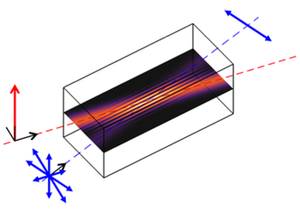 |
Using Plasma to Manipulate Light | November 14, 2014 |
Polarizing components could be created by the interaction of lasers with a plasma. |
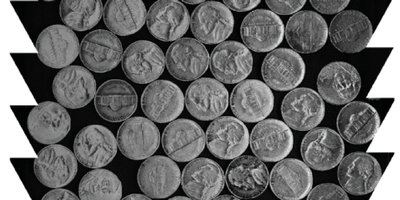 |
Granular Materials Arenít Like Liquids, Except When They Are | May 8, 2014 |
The weight of granular materials can be supported by friction with the walls of their vessel, but not always. |
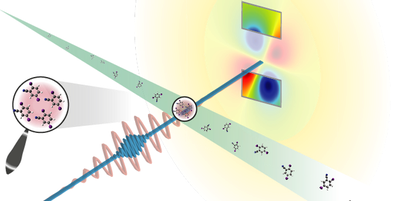 |
X rays Measure Lone Molecules | February 28, 2014 |
Scattering of an x-ray free-electron laser determines an interatomic distance in a beam of aligned molecules, without needing a crystal. |
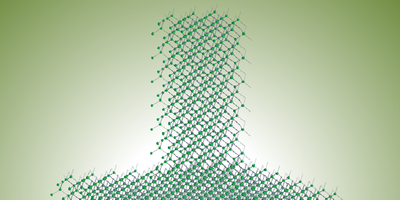 |
Slowing Heat without Obstructions | February 7, 2014 |
Placing pillars on top of a silicon film could slow the vibrational waves that carry heat without impeding electrons, a combination that enhances thermoelectricity. |
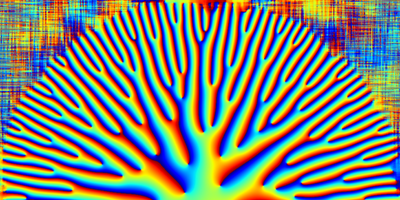 |
Shake a Condensate to Spawn Dozens of Them | December 20, 2013 |
Vigorous excitation of a Bose-Einstein condensate can drive particles to collect in multiple states--but always an odd number of them. |
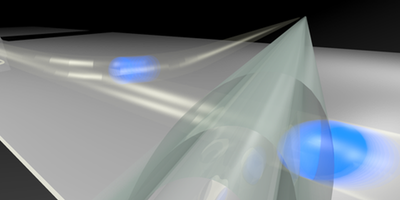 |
Controlling Electrons Reaches a New Level | November 22, 2013 |
An electron pump developed to create a precise current standard can deliver individual electrons for fundamental experiments. |
 |
Accelerating Electrons with Light | September 27, 2013 |
Patterned insulator surfaces can harness the electric field of a light beam to boost electrons passing slowly by up to relativistic speeds. |
 |
A Faster Liquid Crystal | September 6, 2013 |
Modifying the degree of alignment in a liquid crystal instead of its direction makes for a faster optical response. |
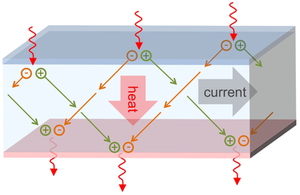 |
A New Direction for Thermoelectric Cooling | May 31, 2013 |
Making heat flow sideways to an electric current could allow new cooler designs. |
 |
Invisibility Cloak for Heat | May 10, 2013 |
Experimenters guide the flow of heat around a two-dimensional obstruction. |
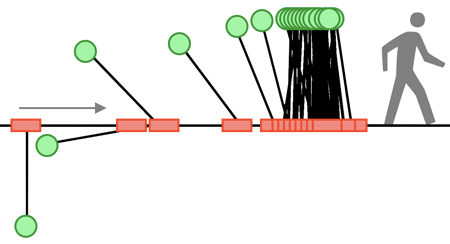 |
Model Suggests Link between Intelligence and Entropy | April 19, 2013 |
Modifying entropy to account for future possibilities gives systems what looks like adaptive intelligence. |
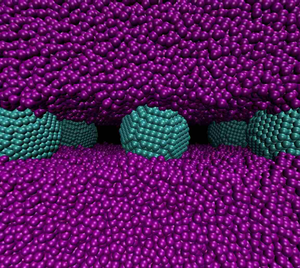 |
Lubricant for Liquids | March 8, 2013 |
Hydrophobic "ball bearings" could let two liquids slide by each other. |
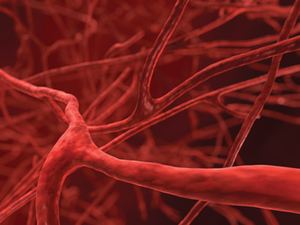 |
Blood Plasma is Not So Normal | February 15, 2013 |
Plasma has a slight springiness that may affect the way blood flows in tiny vessels. |
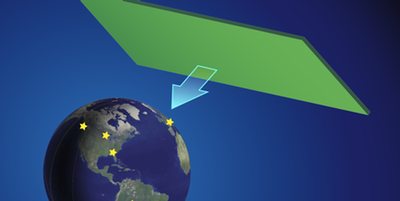 |
Ground-Based Instruments Could Detect Cosmic Wall Structures | January 11, 2013 |
A possible source of dark matter or dark energy |
 |
Tracking Rearrangments in a 2D Liquid | November 26, 2012 |
A dusty plasma provides a model for a liquid near freezing. |
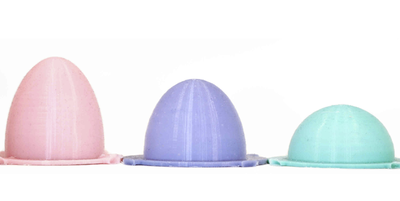 |
Connecting a Thin-Shellís Stiffness with Its Geometry | October 5, 2012 |
Exploring how the shape of curved surface makes it more rigid |
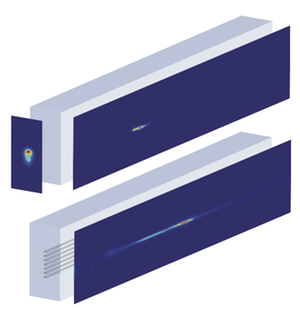 |
Taming Light Filaments | September 14, 2012 |
Intense self-trapped laser pulses can be controlled by forming them in a lattice. |
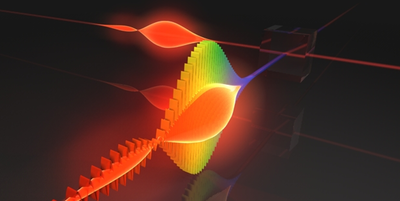 |
Measuring the Shape of a Photon | August 3, 2012 |
Researchers use a genetic algorithm to match their detection system to a stream of individual photons. |
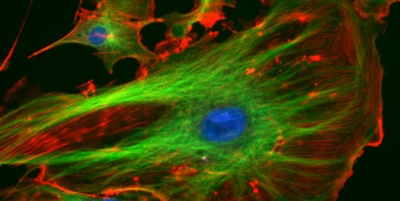 |
How Cells Regulate the Length of Filaments | June 22, 2012 |
Coordinated motion of molecular motors precisely regulates the length of microtubules. |
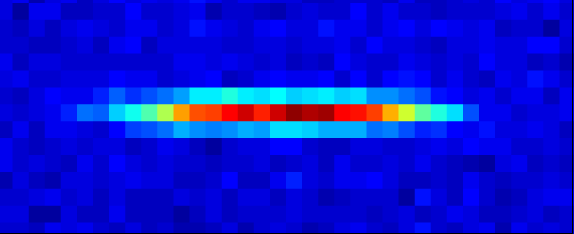 |
Detecting Quantum Motion in a Gas | June 1, 2012 |
Images of an atomic cloud at a few billionths of a degree show signs of residual quantum motions. |
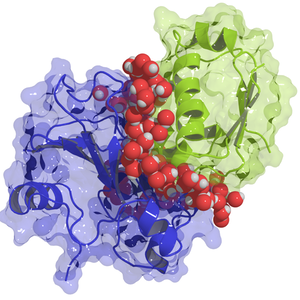 |
Proteins Hook up Where Water Allows | May 4, 2012 |
A new calculation attributes binding between proteins to regions where water can't order properly near the unbound proteins. |
 |
Quantum Information Not Lost in Translation | March 30, 2012 |
Modulating a circuit with an acoustic wave could allow it to exchange quantum information with a trapped ion, opening new possibilities for hybrid quantum computing. |
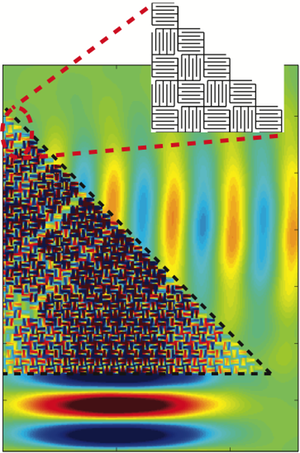 |
Scenic Route for Sound Allows Extra Control | March 16, 2012 |
A metamaterial consisting of tiny tubes could modify sound propagation. |
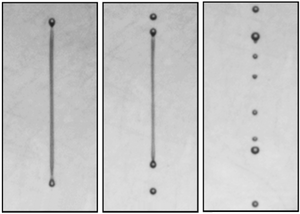 |
February 17, 2012 |
Experiments show how the breakup of a thin liquid filament depends on its viscosity. | |
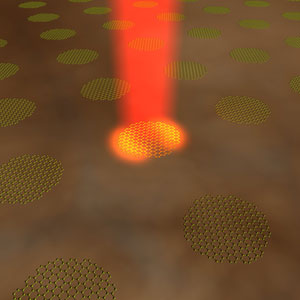 |
January 27, 2012 |
A sheet of tiny structures could completely absorb light, from any direction, as long as the frequency matches that of charge oscillations in the structures. | |
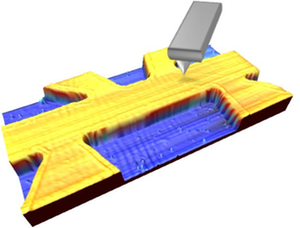 |
December 9, 2011 |
The transition temperature of a thin superconductor layer is locally reduced by 30K by polarizing an atomically registered ferroelectric on top of it. | |
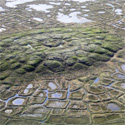 |
October 14, 2011 |
Damaging frost heaves aren't caused by the expansion of freezing water, but by new water that is sucked from deeper underground. | |
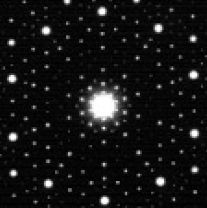 |
October 7, 2011 |
Experiments revealed that not all crystals are peridic. | |
 |
August 12, 2011 |
A focused laser creates bubbles that mimic those that dislodging contaminating particles in ultrasonic clearning. | |
 |
June 3, 2011 |
The abstract mapping between curved spaces and field theories passes another test. | |
 |
May 12, 2011 |
The thermal rotation of molecules broadens photoemission spectra just as their linear motion does. | |
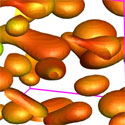 |
March 4, 2011 |
Shape-changing materials may work better when they are structured on the nanometer scale. | |
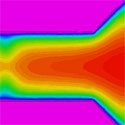 |
January 21, 2011 |
Electrons skating on the surface of liquid helium have to queue up to pass through a narrow constriction. | |
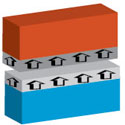 |
January 7, 2011 |
The Casimir force between topological insulators can be repulsive, rather than attractive. | |
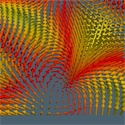 |
November 19, 2010 |
A new way to create cotnrolled topological defects. | |
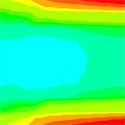 |
October 15, 2010 |
A nanochannel that wets differently along its length could drive fluid flow to cool computer chips. | |
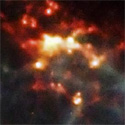 |
October 1, 2010 |
Collapsing matter could trigger an explosive increase in the energy of empty space. | |
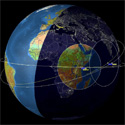
| September 17, 2010 |
Satellite measurements home in on the thunderstorm sources of gamma-ray flashes. | |
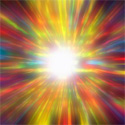 |
August 6, 2010 |
Laboratory metamaterials, like those proposed for "invisibility cloaks," could also explore the effects of dramatic changes in spacetime geometry that may have occurred in the early universe. | |
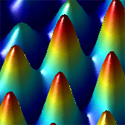 |
July 30, 2010 |
A light beam reveals its subtle "orbital angular momentum" when it passes through a triangular aperture. | |
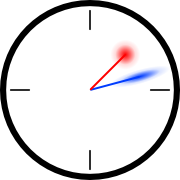
| June 25, 2010 |
Entangling and squeezing the state of many cold atoms lets atomic clocks do better than a simple quantum-mechanical prediction. | |
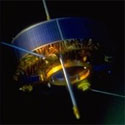 |
April 30, 2010 |
Using multiple satellites to probe the complex flow of particles from the sun | |
 |
April 16, 2010 |
A proposed addition to the light-manipulating toolkit | |

| March 26, 2010 |
Chemistry below a millionth of a degree | |

| February 26, 2010 |
Survival of the most entangled | |
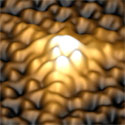
| February 22, 2010 |
Experiments confirm that a missing carbon atoms in a sheet have the ingredients for magnetism. | |
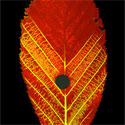
| February 4, 2010 |
A revised view of how metabolism scales with body size, and why the veins in leaves often have loops | |

| December 28, 2009 |
The surprising tendency of some large negative ions to accumulate at the water surface may reflect their electrical polarizability | |

| October 30, 2009 |
Researchers measure the electrical conduction between two carefully positioned carbon-60 molecules. | |
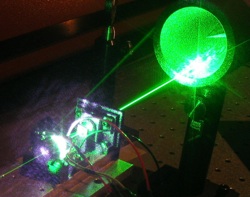
| September 21, 2009 |
Researchers probe the femtosecond-scale time profile of two engtangled photons. | |
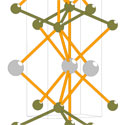
| September 4, 2009 |
A simple model accounts for the direction-dependent hardness of new materials that can scratch diamond. | |
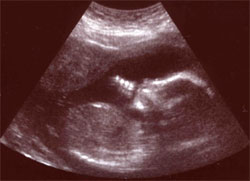 Sam Pullara
Sam Pullara |
August 25, 2009 |
A proposed structure would let sound energy pass in only one direction. | |
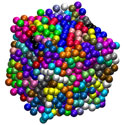 |
Randomness Reigns in Crystalline Order | July 31, 2009 |
Densely-packed spheres naturally form a crystal to increase entropy, even when they are connected into a polymer. |
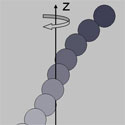 |
Mix Master Magnets | July 7, 2009 |
In a spinning magnetic field, magnetizable beads spontaneously join into chains that stir even tiny volumes of liquid. |
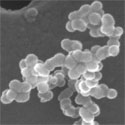 |
Stringy Soot | June 12, 2009 |
Some rare soot particles are much less bushy than the usual ones. |
 |
A Light Touch | May 8, 2009 |
A surprisingly feeble light can help flip the magentization of a semiconducting ferromagnetic film at low temperatures. |
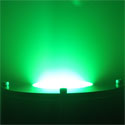 |
Copper, Sputter Thyself | February 3, 2009 |
When researchers push a sputtering machine very hard, as plasma of atoms from the target itself deposits many more ions. |
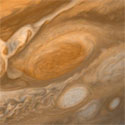 |
Big Waves from a Small Source | October 23, 2008 |
Theorists find a new type of persistent eddy in banded turbulent flows like that on Jupiter. |
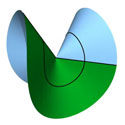 |
Elizabethan Geometry | October 3, 2008 |
Extra material inserted into a growing disk causes it to buckle into complex shapes. |
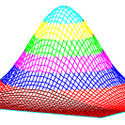 |
Journey to the Center of the Neutron | September 26, 2008 |
A newly recognized negative charge at the center of the nucleus is traced to an abundance of very fast "down" quarks. |
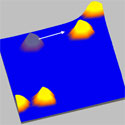 |
To Slide or Not to Slide | September 19, 2008 |
Some nanoscale islands move without friction, while others do not, supporting the idea that frictionless motion is normal except when impurity molecules gunk up the surface. |
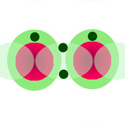 |
Nuclear Chemistry | July 25, 2008 |
A nucleus in which extra neutrons bind alpha particles like electrons bind atoms in molecules can be directly created in collisions, theorists predict. |
 |
Squeezed into Darkness | May 8, 2008 |
A new way to "squeeze" the quantum noise from a light beam. |
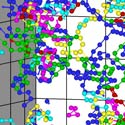 |
Atomic Dance Drives Melting | April 30, 2008 |
Simulations suggest that melting of an infinite perfect crystal happens when atoms form a bucket brigade. |
 |
What Doesn't Kill You Makes You Weaker | March 5 , 2008 |
Researchers relate a century-old law of fatigue failure of repetitively stressed materials to the accumulation of microscopic damage. |
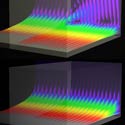 |
Waves on a Plane | February 6, 2008 |
Using anisotropic materials could let researchers keep surface waves confined at a metal surface to exploit their light-like properties. |
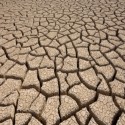 |
Crystal Healing | January 28, 2008 |
An electric field along the surface of a crystal can prevent a stress-driven instability. |
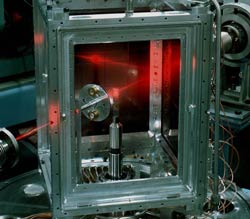 |
Nuclei in Collision | November 12, 2007 |
The fusion rate between large nuclei may depend on loss of effective phase coherence due to nuclear excitations |
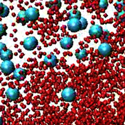 |
Clarity through Diversity | November 2, 2007 |
Precisely tune intermolecular attractions may clarify cataract formation |
 |
Sensitive Magnetic Sandwich | October 15, 2007 |
The 2007 Nobel Prize in Physics for Giant Magnetoresistance |
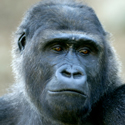 |
How Steady is a Molecular Clock? | September 19, 2007 |
The varying topology of the underlying network of possible mutated forms of a protein makes it an erratic gauge of evolution. |
 |
The Best of Both Worlds | June 22, 2007 |
A story on "multiferroics" that have both permanent magenetism and electrical polarization. |
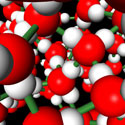 |
Water Molecules, Unite! | June 18, 2007 |
Enhanced dipoles on each molecule and collective motions both contribute to the extraordinarily high polarizability of water. |
 |
Packin' em In | June 8, 2007 |
Randomly arranged hard spheres can't pack any tighter once all of them are part of tetrahedra. |
 |
Xenon on the Verge of Electric Breakdown | February 9, 2007 |
Researchers measure the electric field as an "ionization front" turns a neutral gas into a plasma. |
 |
Molten Metal Magnet | January 30, 2007 |
A turbulent, swirling tank of molten sodium generates its own magnetism, just as Earth does. |
 |
Tracking Nuclei on the Move | October 25, 2006 |
Nuclear magnetic can track exchange of molecules between pores of rock to aid petroleum recovery. |
 |
Photons Team Up | September 26, 2006 | Intense, synchronized pulses of infrared and ultraviolet light could probe electrons at surfaces with sub-femtosecond resolution. |
 |
Cosmology in the Lab | May 19, 2006 | Looking at a vortex trapping in a superconducting bagel sandwich for clues about the early universe. |
 |
Off the Wall | March 9, 2006 | The heat flow from turbulent convection is different far from any confining boundaries |
 |
Doing the Twist | March 3, 2006 | The spiral shape of the cochlea lets it respond better to low frequencies Winner of one of the Acoustical Society of America's 2006 Science Writing Awards |
 |
Rough Skin is Good | February 17, 2006 | Texturing a surface can reduce drag |
 |
Nobel Focus: Photons at the Forefront | October 25, 2005 | The 2005 Nobel Prize in Physics |
 |
Just a Tool | September 8, 2005 | Using the Bose-Einstein condensate for fundamental measurements |
 |
Living on the Edge | April 26, 2005 | A Colossal-Magnetoresistance story |
 |
Watching Atoms Move | February 11, 2005 | A surface-science story |
 |
The Most Antimatter | January 14, 2005 | The most antiprotons ever captured |
 |
X-Rayed Movie | June 14, 2004 | The fastest movie ever made |
 |
Twisty Tweezers | May 19, 2004 | Applying a controlled torque to a particle in optical tweezers |
 |
Don't let them know you're watching | May 14, 2004 | Demonstration of nonlocality in single photons |
 |
Ghost of Superconductivity on a Fall Day | May 1, 2004 | A high-temperature superconductivity story |
 |
A New Direction for Liquid Crystals | April 12, 2004 | A long-sought phase of liquid crystals |  |
A Constant Worthy of the Name | March 31, 2004 | Quasar spectra may not indicate a changing fundamental constant, after all |
 |
Light at the End of the Tunnel | March 19, 2004 | A photonic crystal story |
 |
Complexity is Elusive | March 4, 2004 | A cellular automaton story |
 |
Stop Light on a Chip | February 27, 2004 | Manipulating the quantum nature of light |
 |
Beam Up an Electron | February 6, 2004 | A quantum teleportation story |
 |
Birth of a Crystal | February 5, 2004 | Computer simulation of nucleation |
 |
Timing is Everything | January 15, 2004 | A spintronics story |